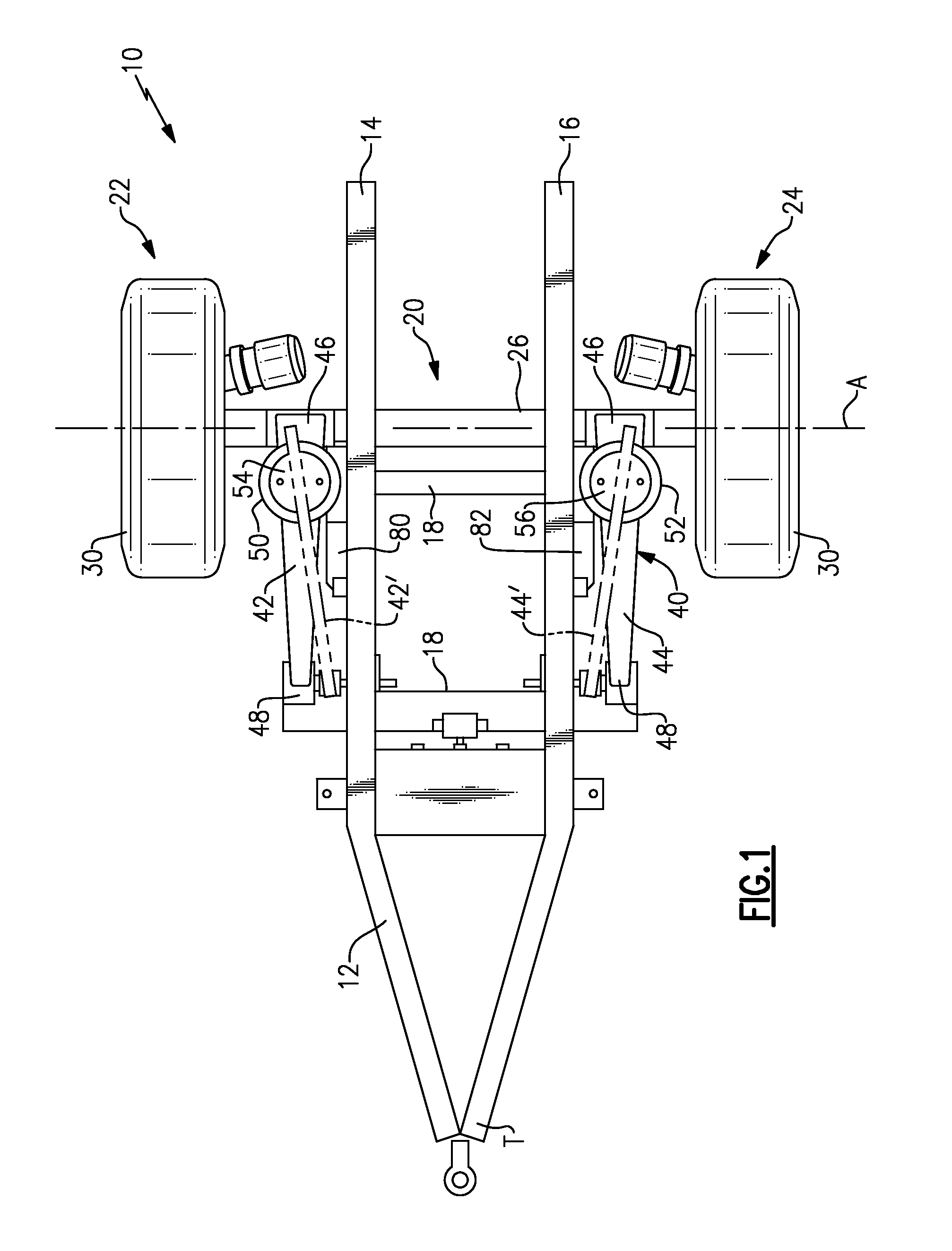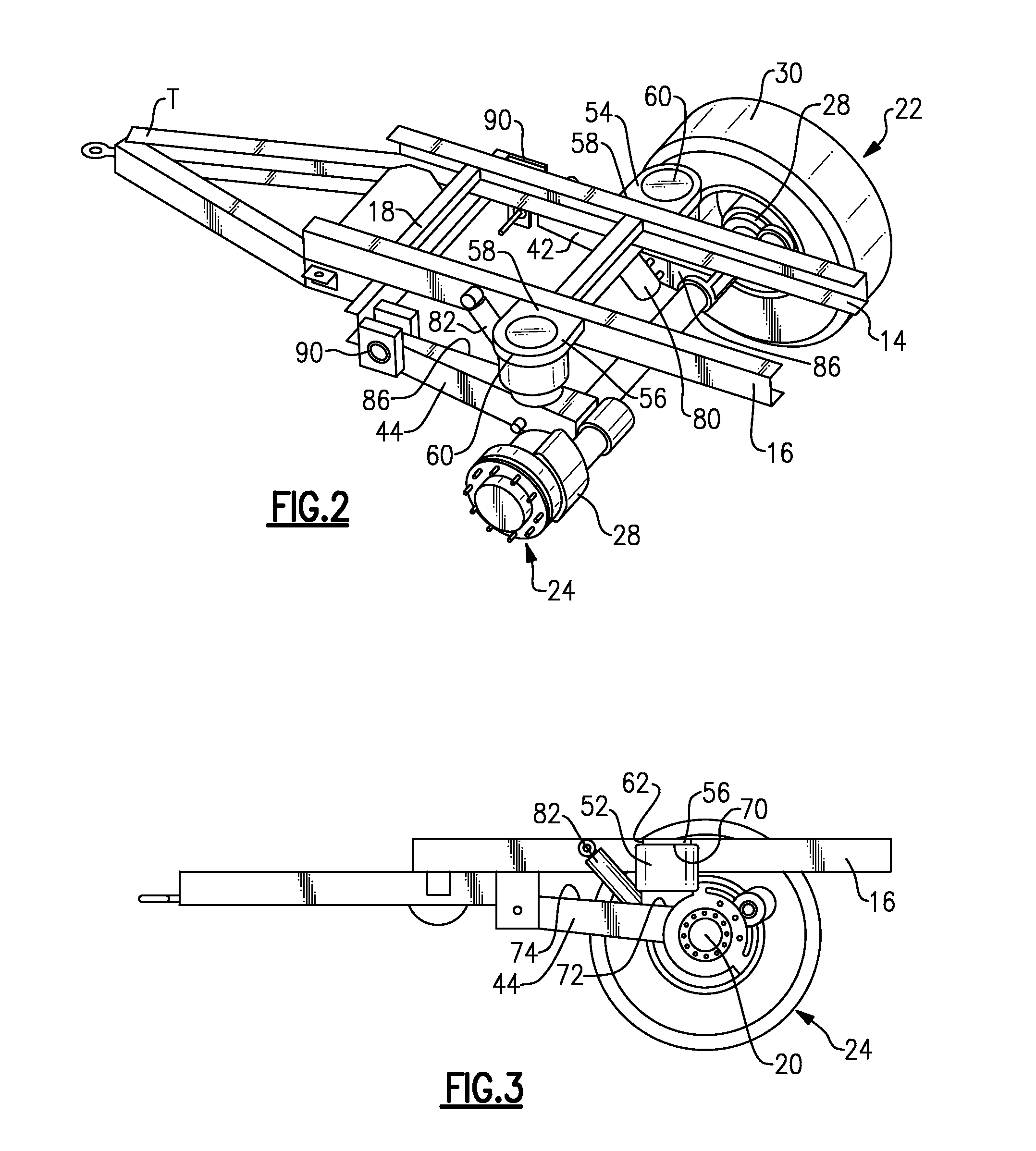Side mounted air spring trailing arm suspension
- Summary
- Abstract
- Description
- Claims
- Application Information
AI Technical Summary
Benefits of technology
Problems solved by technology
Method used
Image
Examples
Embodiment Construction
[0021]FIG. 1 shows a trailer 10 with a frame 12 having a first side rail 14 and a second side rail 16 that extend generally in a longitudinal direction along a length of the trailer 10. The trailer frame 12 includes one or more cross-rails 18 that extend generally in a lateral direction across a width of the trailer 10. The cross-rails 18 are connected at opposing ends to the first 14 and second 16 side rails. The trailer 10 also includes a tongue T configured for connection to a vehicle as known.
[0022]A rigid axle 20 includes first 22 and second 24 wheel assemblies that are laterally spaced apart from each other. The rigid axle includes an axle housing or axle tube 26 having one axle end mounted to the first wheel assembly 22 and an opposite axle end mounted to the second wheel assembly 24. The axle tube 26 defines an axis of rotation A about which the first 22 and second 24 wheel assemblies rotate. Each wheel assembly 22, 24 includes a brake assembly (schematically indicated at 28...
PUM
 Login to View More
Login to View More Abstract
Description
Claims
Application Information
 Login to View More
Login to View More - R&D
- Intellectual Property
- Life Sciences
- Materials
- Tech Scout
- Unparalleled Data Quality
- Higher Quality Content
- 60% Fewer Hallucinations
Browse by: Latest US Patents, China's latest patents, Technical Efficacy Thesaurus, Application Domain, Technology Topic, Popular Technical Reports.
© 2025 PatSnap. All rights reserved.Legal|Privacy policy|Modern Slavery Act Transparency Statement|Sitemap|About US| Contact US: help@patsnap.com



